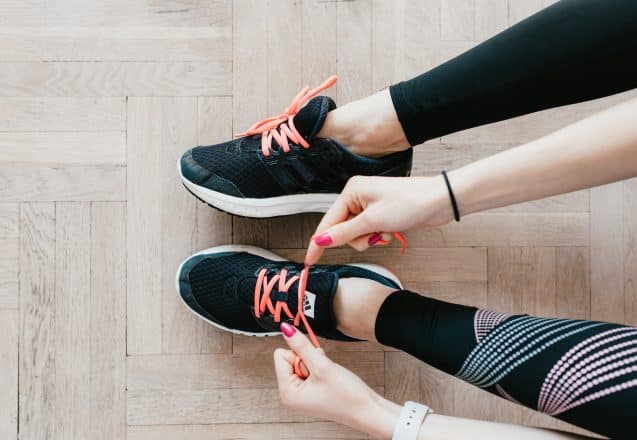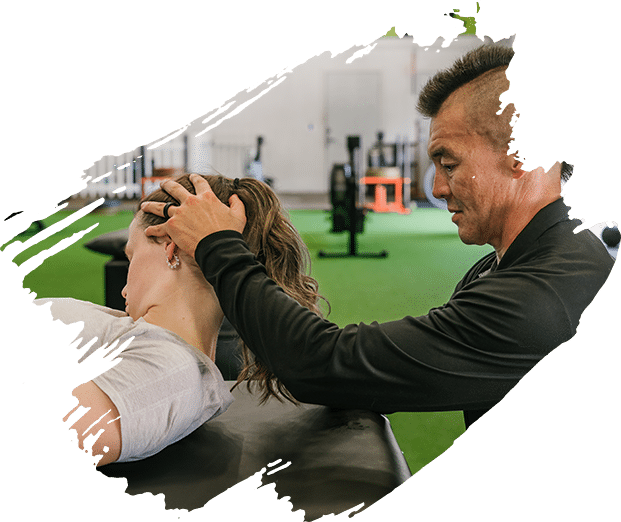What Are The Signs I’m Working Out Too Much?
 It doesn't happen very often, but sometimes, we see people have all the signs that they're working out too much. Yes, no matter how healthy exercise is, you can take it too far. Check your workout schedule. Are you working out for hours every day? Are you doing strength training for your whole body seven days a week? That can be a good indicator.
It doesn't happen very often, but sometimes, we see people have all the signs that they're working out too much. Yes, no matter how healthy exercise is, you can take it too far. Check your workout schedule. Are you working out for hours every day? Are you doing strength training for your whole body seven days a week? That can be a good indicator.
What are the dangers of over-exercising?
Over-exercising can be counterproductive. In fact, that's also one of the signs. If you're putting in more time in the gym and really exercising, but aren't seeing the results, you might need to cut back on workout time. Working out too much taxes the body. It doesn't give the muscles a chance to heal the small microtears, which build muscle tissue. It takes 48-hours or longer for those to heal, so you need to give the muscle groups a rest. If you want to do strength training daily, alternate muscle groups you work.
You might be getting colds and flu more frequently.
When you workout too much, it can affect your immune system. Even though exercise burns off the hormones of stress, strenuous exercise, particularly if it's done too frequently or for too long, can actually cause stress. While the muscle repairs, your immune system isn't efficient. It can take up to 72 hours for the immune system to return to normal. That's while the body is healing the microtears in the muscle that cause the muscle to grow. Overtraining can lead to a less efficient immune system.
Your body will tell you what you need to know.
If you're finding you're always exhausted or feel exhausted more quickly when you're physically active, you might be working out too much. Recovery also takes longer after a workout. You simply don't do as well as before and start losing ground. The harder and longer you workout, the worse it gets. Chronic fatigue, longer recovery time, anxiety, anger, depression and confusion are all signs you may be working out too much.
- Alternating your strength-building workout by working different parts of the body on different days or alternating aerobic, strength-building, flexibility and balance workouts can help.
- Exercise helps you fall asleep quicker, so if you find you suddenly have insomnia, you might be working out too much. You can still workout daily, just make alternate days a recovery workout.
- You'll feel tired sooner, indicating you're losing ground from working out too much, but you also may be losing muscle mass and increasing the amount of body fat you have.
- Your heart rate can tell you when you need rest. If your resting heart rate is normally 50 beats a minute, but it jumps to 80 beats a minute regularly, you might have stressed your body too much with too much exercise.
For more information, contact us today at Habitat Health & Fitness



 In order to arrive at a destination, you need to know where you're going. That's true whether you're taking an actual trip or talking about fitness goals. If you plan to drive from New York City and start at 8 a.m., planning to arrive in Lakeland, Florida at 9 a.m., you need to re-evaluate your goals, because they aren't realistic. The same is true when it comes to fitness goals. If you have a goal of winning a ten mile marathon next week but haven't done any type of physical activity in years or want to lose 60 pounds in two weeks, you need to rethink your goals. They simply aren't realistic.
In order to arrive at a destination, you need to know where you're going. That's true whether you're taking an actual trip or talking about fitness goals. If you plan to drive from New York City and start at 8 a.m., planning to arrive in Lakeland, Florida at 9 a.m., you need to re-evaluate your goals, because they aren't realistic. The same is true when it comes to fitness goals. If you have a goal of winning a ten mile marathon next week but haven't done any type of physical activity in years or want to lose 60 pounds in two weeks, you need to rethink your goals. They simply aren't realistic.

 I've noticed a lot of vegan restaurants and plant-based food options in the grocery store in Lakeland, FL. It's part of a new trend and eating style that's in all areas. There are even plant-based protein choices at fast food restaurants. So, which is best? Are there benefits to consuming animal-based protein or should we look to the plant world for protein in our diets?
I've noticed a lot of vegan restaurants and plant-based food options in the grocery store in Lakeland, FL. It's part of a new trend and eating style that's in all areas. There are even plant-based protein choices at fast food restaurants. So, which is best? Are there benefits to consuming animal-based protein or should we look to the plant world for protein in our diets?
 The changes in the body when you're under stress serve a purpose. Those changes were particularly important in early times, when the fight or flight response made the difference between survival and death. However, today, people in Lakeland, FL, and across the US now experience chronic stress part of daily living. Stress doesn't have to be as challenging as a death of a loved one or loss of a job. It can occur during happier situations, such as weddings or preparing to go on vacation. All stressors cause hormonal changes. They increase cortisol levels, can cause permanent changes to the body and affect your overall health and fitness.
The changes in the body when you're under stress serve a purpose. Those changes were particularly important in early times, when the fight or flight response made the difference between survival and death. However, today, people in Lakeland, FL, and across the US now experience chronic stress part of daily living. Stress doesn't have to be as challenging as a death of a loved one or loss of a job. It can occur during happier situations, such as weddings or preparing to go on vacation. All stressors cause hormonal changes. They increase cortisol levels, can cause permanent changes to the body and affect your overall health and fitness.
 If you're like one of the almost 30 million of Americans who developed some form of Covid-19, you want to get back to your healthier self and exercising is one way to do it. How soon is it safe for you to begin a regimen of exercise after covid? There's no one right answer, just as no two cases of Covid are exactly alike. Even mild cases may have lingering symptoms or show improvement one day and get worse the next. Unlike many illnesses, recovery from covid normally doesn't show a linear recovery.
If you're like one of the almost 30 million of Americans who developed some form of Covid-19, you want to get back to your healthier self and exercising is one way to do it. How soon is it safe for you to begin a regimen of exercise after covid? There's no one right answer, just as no two cases of Covid are exactly alike. Even mild cases may have lingering symptoms or show improvement one day and get worse the next. Unlike many illnesses, recovery from covid normally doesn't show a linear recovery.
 When the weather is hot, like it is in the summer if Florida, it's easy to take the car for short trips and even may be wiser if you have health issues. However, on those wonderfully cooler days, taking a walk can be a huge boost to your overall health. There are health benefits of walking that you may be missing, even if you workout regularly at the gym. You'll be more in touch with nature when you walk, especially if you go to the many parks, lakes and gardens in the area, like Hollis Garden.
When the weather is hot, like it is in the summer if Florida, it's easy to take the car for short trips and even may be wiser if you have health issues. However, on those wonderfully cooler days, taking a walk can be a huge boost to your overall health. There are health benefits of walking that you may be missing, even if you workout regularly at the gym. You'll be more in touch with nature when you walk, especially if you go to the many parks, lakes and gardens in the area, like Hollis Garden.
 If you workout at Habitat Health and Fitness in Lakeland, FL, to get into shape, you'll often find a wonderful side effect. You feel better, too. Exercise can improve your health in a number of ways, including boosting your gut health. What does that mean? Good gut health involves many mechanisms. It's about the peristalsis that moves food through the digestive tract, the health of the gut microbiome and the messaging system between the gut and the brain.
If you workout at Habitat Health and Fitness in Lakeland, FL, to get into shape, you'll often find a wonderful side effect. You feel better, too. Exercise can improve your health in a number of ways, including boosting your gut health. What does that mean? Good gut health involves many mechanisms. It's about the peristalsis that moves food through the digestive tract, the health of the gut microbiome and the messaging system between the gut and the brain.
 Habitat Health and Fitness in Lakeland, FL provides the opportunity to get fit, but we hope you use that opportunity and engage in active pastimes and hobbies to improve and use your newly gained fitness. People normally nod and agree when I mention hiking, basketball or bike riding, but look a little puzzled or shake their head when I mention yoga. There are
Habitat Health and Fitness in Lakeland, FL provides the opportunity to get fit, but we hope you use that opportunity and engage in active pastimes and hobbies to improve and use your newly gained fitness. People normally nod and agree when I mention hiking, basketball or bike riding, but look a little puzzled or shake their head when I mention yoga. There are
 Man has always been hardwired to love a sweet taste. Some believe it was because most sweet foods are not toxic, and that was the clue to early man it was edible. However, sugar has its negative effects on the body, so many people look for a healthy sugar replacement. What's the healthiest route to take? Give up sugar entirely. Many of the alternatives on the market come with their own set of negatives, like the explosive diarrhea and gas that sugar alcohols can create. You also have to remember that just because it's natural, it doesn't mean it's healthy.
Man has always been hardwired to love a sweet taste. Some believe it was because most sweet foods are not toxic, and that was the clue to early man it was edible. However, sugar has its negative effects on the body, so many people look for a healthy sugar replacement. What's the healthiest route to take? Give up sugar entirely. Many of the alternatives on the market come with their own set of negatives, like the explosive diarrhea and gas that sugar alcohols can create. You also have to remember that just because it's natural, it doesn't mean it's healthy.